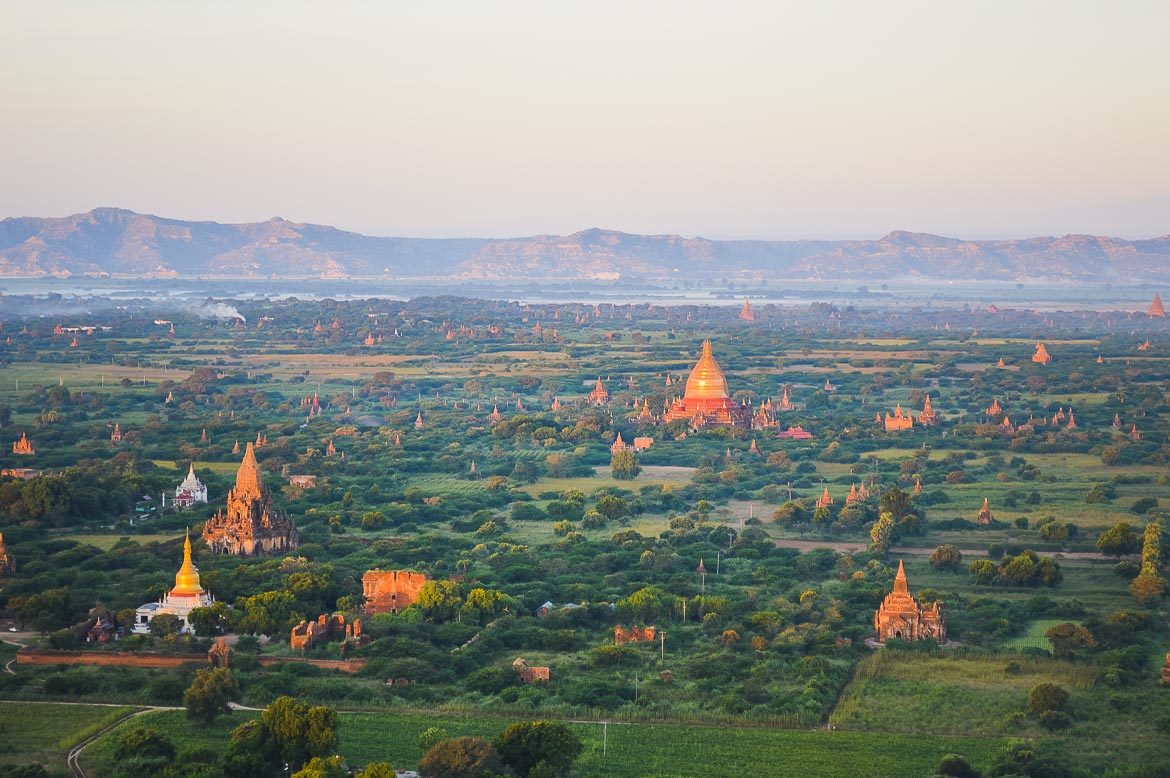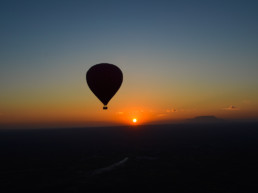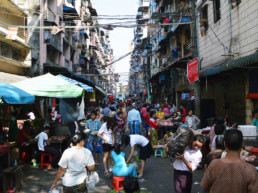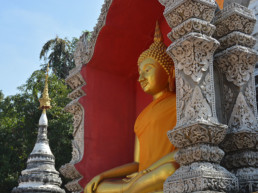Sunrise in Bagan; a giant golden orb slowly rises behind the temple dotted plains and mountain range. Its first rays bounce off of a sea of ancient monuments below, much to the delight of travellers perched atop various temple lookouts, cameras in hand. A similar magic plays out each evening at sunset. Sound like a fairytale? It’s actually a wonderful reality for those who visit Myanmar’s most well known archeological site and travel destination.
Bagan is home to over 2,200 remaining religious monuments, many of which are over one thousand years old. The never ending pursuit of perfect temple views, whether at sunrise, mid-day or sunset, can be dizzying for even the most seasoned traveller. Since most visitors can’t stay long enough to survey all 104 square kilometres of the region, I thought I’d share a few travel hacks for those looking to enjoy some incredible views away from the crowds.
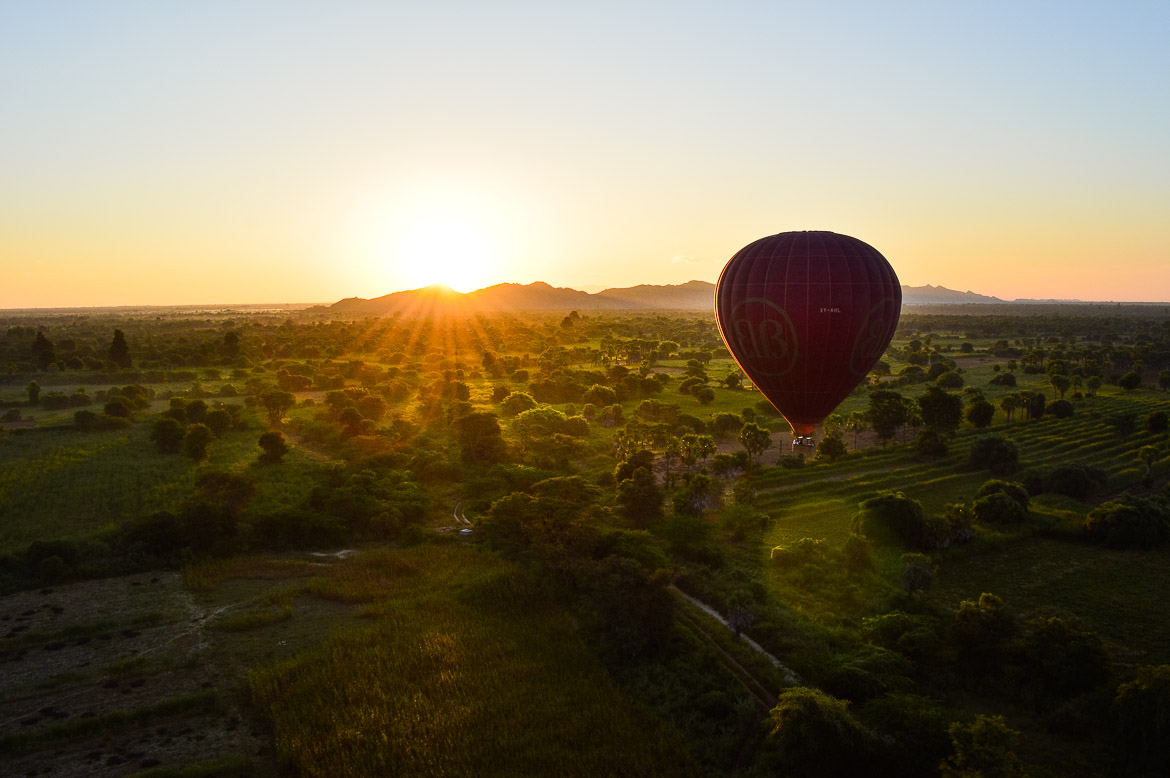
Getting Around Bagan & Its Temples
By far, the most common mode of transport for travellers around Bagan is e-bike. Despite offering the benefit of an accompanying guide, neither cars nor ox carts can traverse the often sandy, narrow paths like bikes can. Conversely, given the sizeable distances one hopes to cover and the hot daytime temperatures, pedal bikes are simply not worth it for the few bucks you save versus an e-bike. Almost all large guest houses or hotels around town rent the bikes, average cost is negotiable and ranges from 4,000 Kyat for half day, to 10,000 for the full day. Be sure to check you’ve got a full charge, the phone number of the rental provider in the event something goes wrong, a helmet (though not legally required) and you’re off! Since street lights are scarce but beer is cheap in Bagan, I strongly advise you avoid riding after dark.
It’s common to see visitors jetting off in the early morning hours to catch sunrise from the top of a temple. They then return in the early afternoon to avoid the oppressive heat, catch a lunch and nap, and head back out around 4pm for sunset. The intrepid traveller may be willing to buck the trend and stay out during the afternoon. If you do, and are willing to travel a little further afield, your rewards include small temples all to yourself.
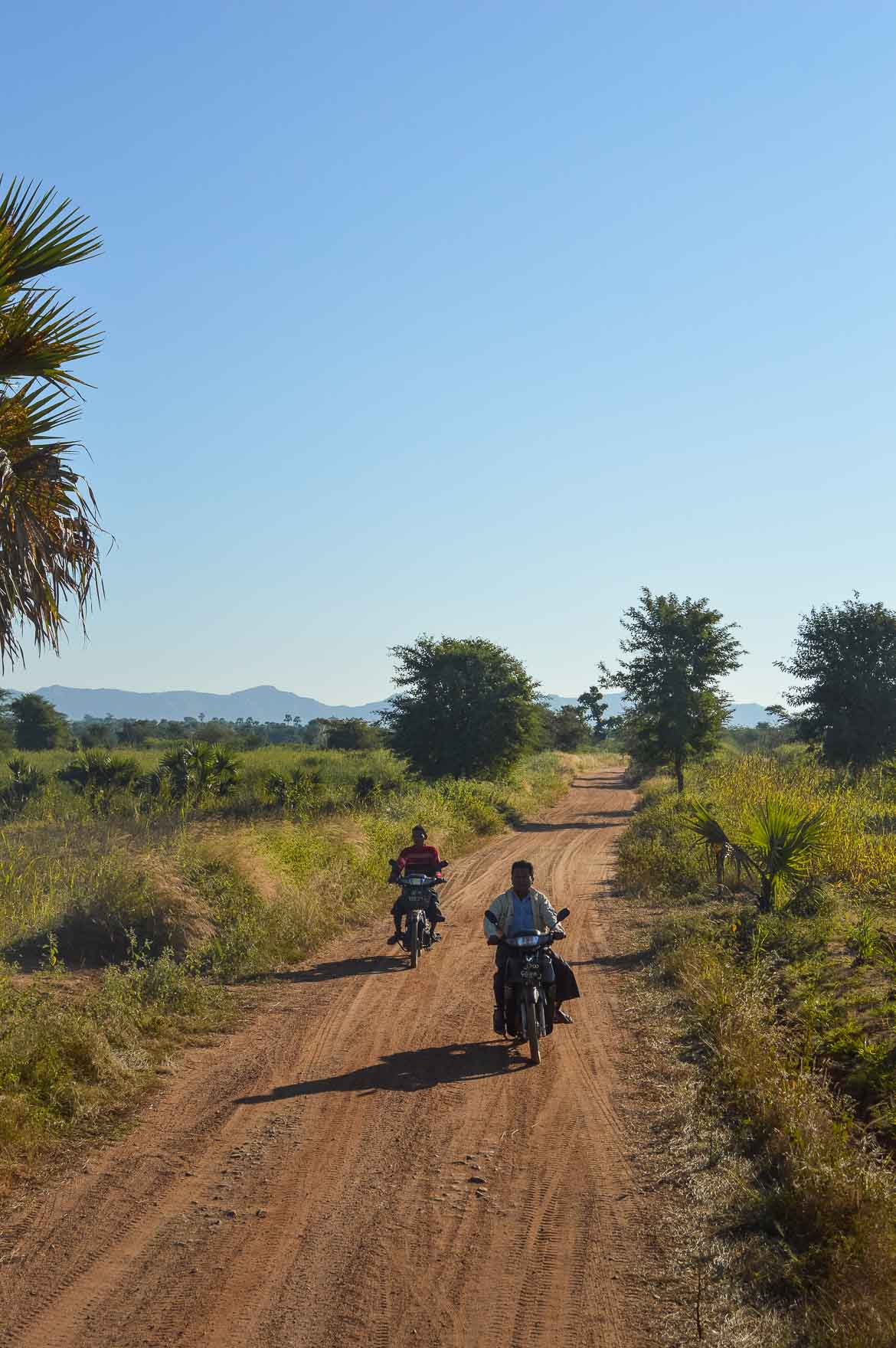
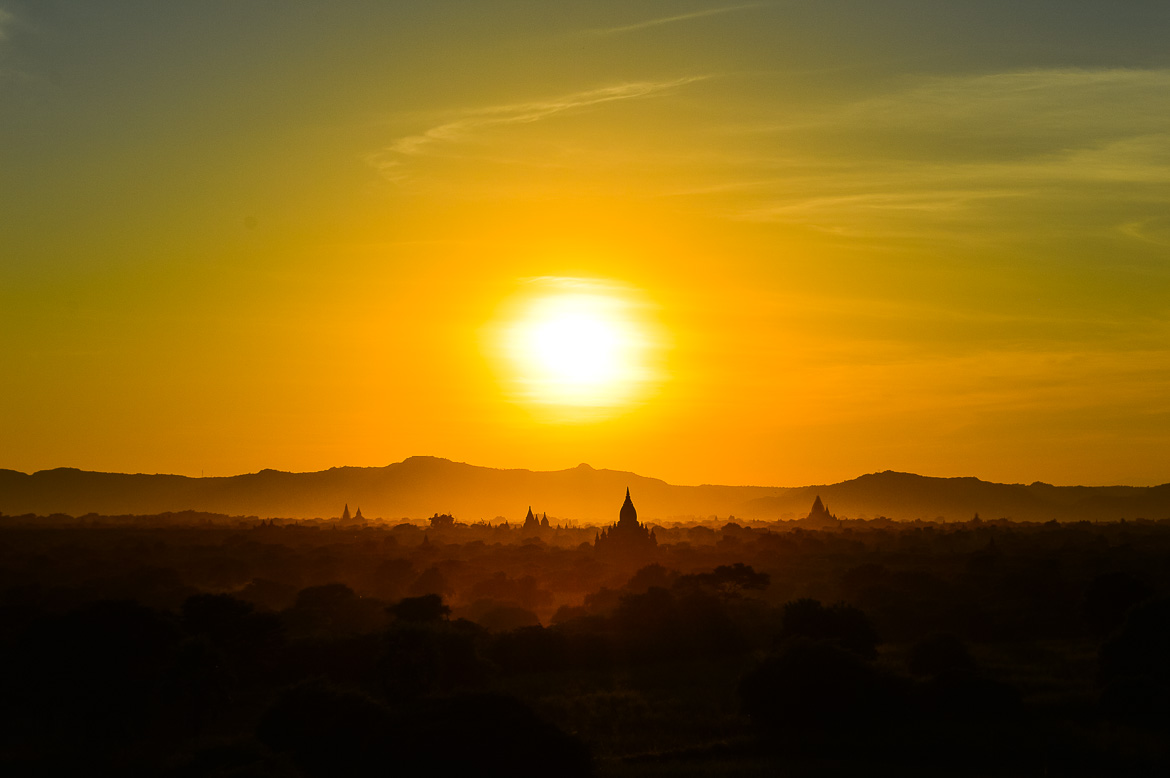
A Few Rules To Consider
Before you pack up and head to Bagan, there a few notable rules – some of which are firm laws – which all travellers should be aware of:
All international visitors must buy a 25,000 Kyat ($18 USD) ‘Bagan Archeological Zone Pass‘, valid for five days. Passes are easily available at the airport, bus station and ferry jetty. Visitors are subject to random spot checks at various temple sites, so it’s best to always keep it on you.
All monuments, whether stupa, temple, or monastery are sacred religious sites, so dress accordingly. This means removal of shoes (and socks) upon entry, legs covered to the knees, and no bare shoulders, particularly for women.
Climbing secret passages to the tops of temples is both fun and helpful in capturing that perfect photo. While select monuments permit this, if there is no clear stairway, it’s ill advised to attempt to climb up any structure. Several monuments were significantly damaged in the most recent earthquake to hit the region in August 2016 and have since had portions closed off until restoration is complete. Respect the signs or risk a brick to the head. You’ve been warned.
Cameras and tripods of pretty much all shapes and sizes are permitted. However, drones are banned unless specific applications and expensive licenses are obtained in advance from the government. While capable of creating impressive movies, they are also equally capable of crashing into and damaging historic monuments.
While not a law, a good principle is to avoid giving money or gifts to children selling souvenirs or begging outside of the temples. It simply reinforces the wrong behaviour, drawing youth away from school.
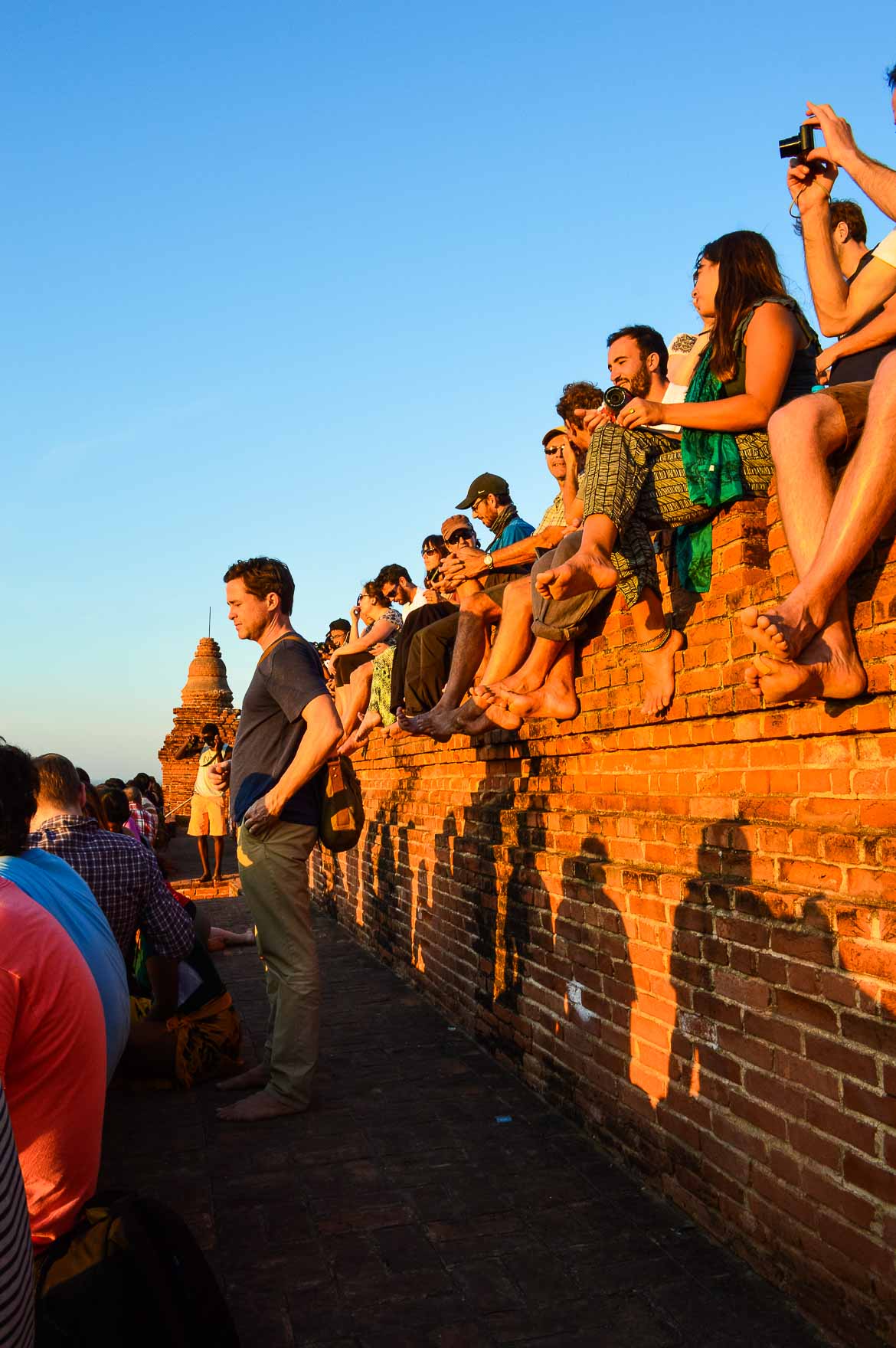
The ‘Hit List’
There are several notable structures in Bagan that stand out on the landscape. Some are known for particularly striking sunrise or sunset views, while others’ size make them popular enough to merit bus loads of visitors all day long. Prepare yourself to not be alone at these ones.
Pyathadar (Pyathatgyi) Temple is perhaps the last great construction of the 10th to 15th century Pagan dynasty. It offers several tiered terraces on its roof for visitors to watch the sunset from a particularly impressive vantage point. While sunset crowds can easily number into the hundreds, the site is large enough as to not feel horribly overcrowded. Arrive at least 45 minutes before sunset to secure the ledge or seat of your choice. Consider this time a great opportunity to chat with fellow travellers around you, or silently take in the view of nearby Sulamani Pahto. Each evening cattle are herded across the plains, literally using the road up to Pyathadar on their route. The parade, which often causes extensive traffic jams for incoming cars and tourist buses is a sight to behold.
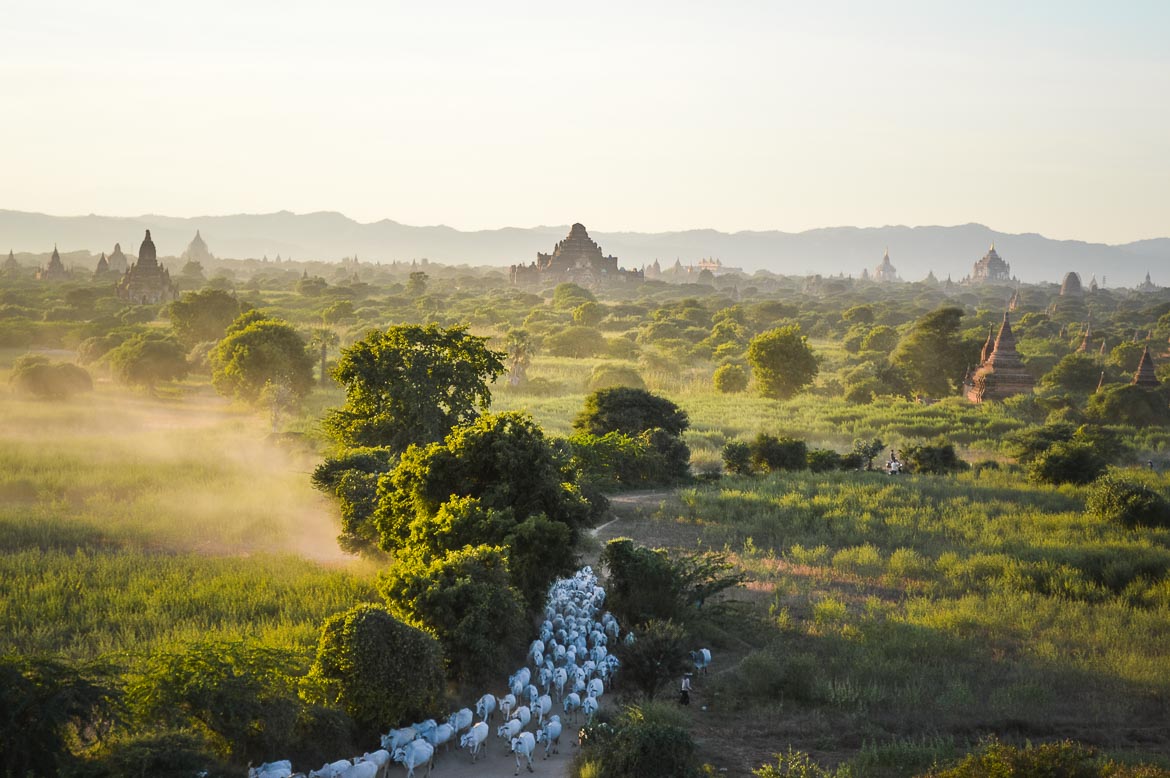
Shwezigon Pagoda – This temple shares a very similar layout as it namesake, the mighty Shwedagon Pagoda in Yangon. The sheer amount of gold that blankets the site means it creates magical photos nearly any time of day. Be prepared however, that for several months every three years the central stupa may be covered as restoration teams reapply a new layer of gold leaf, as has been the case since November 2016.
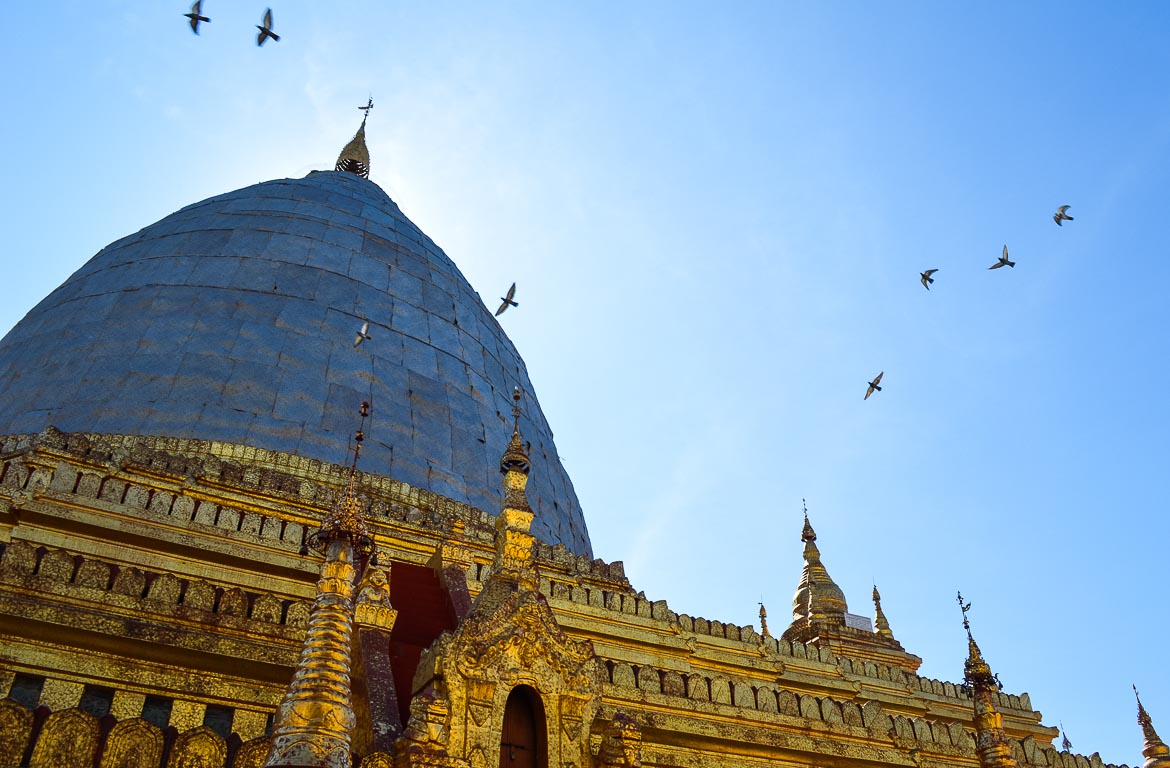
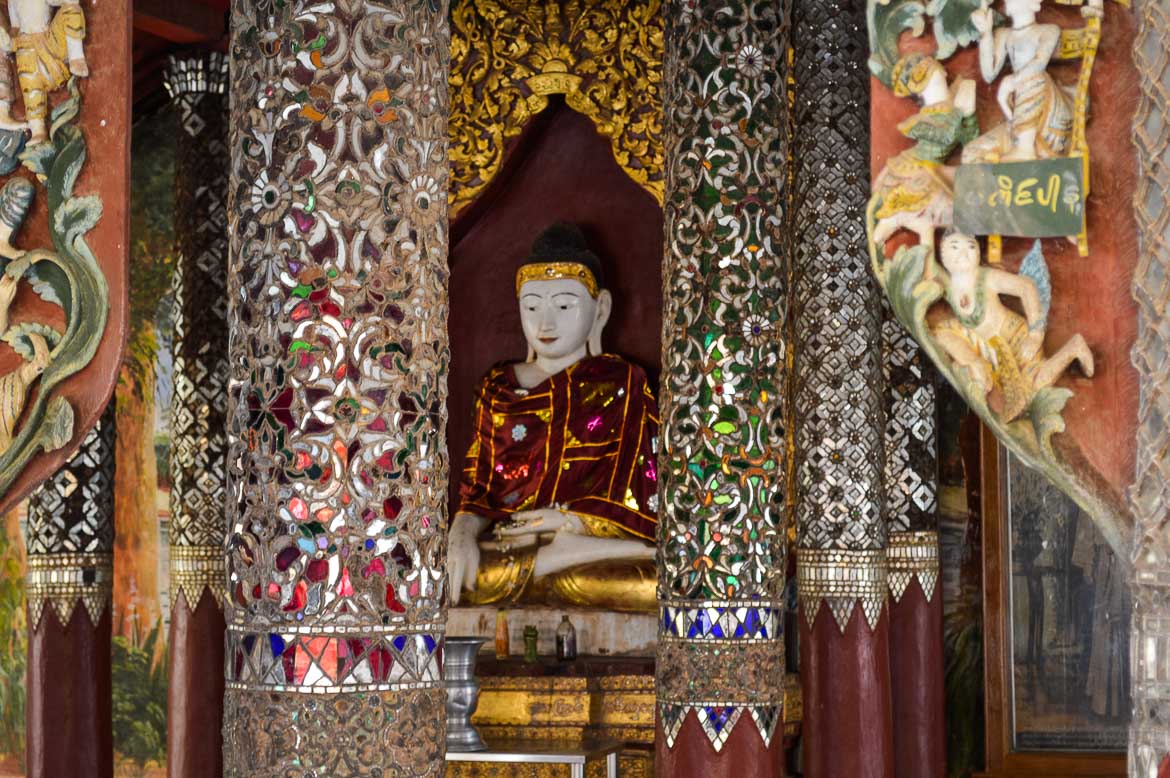
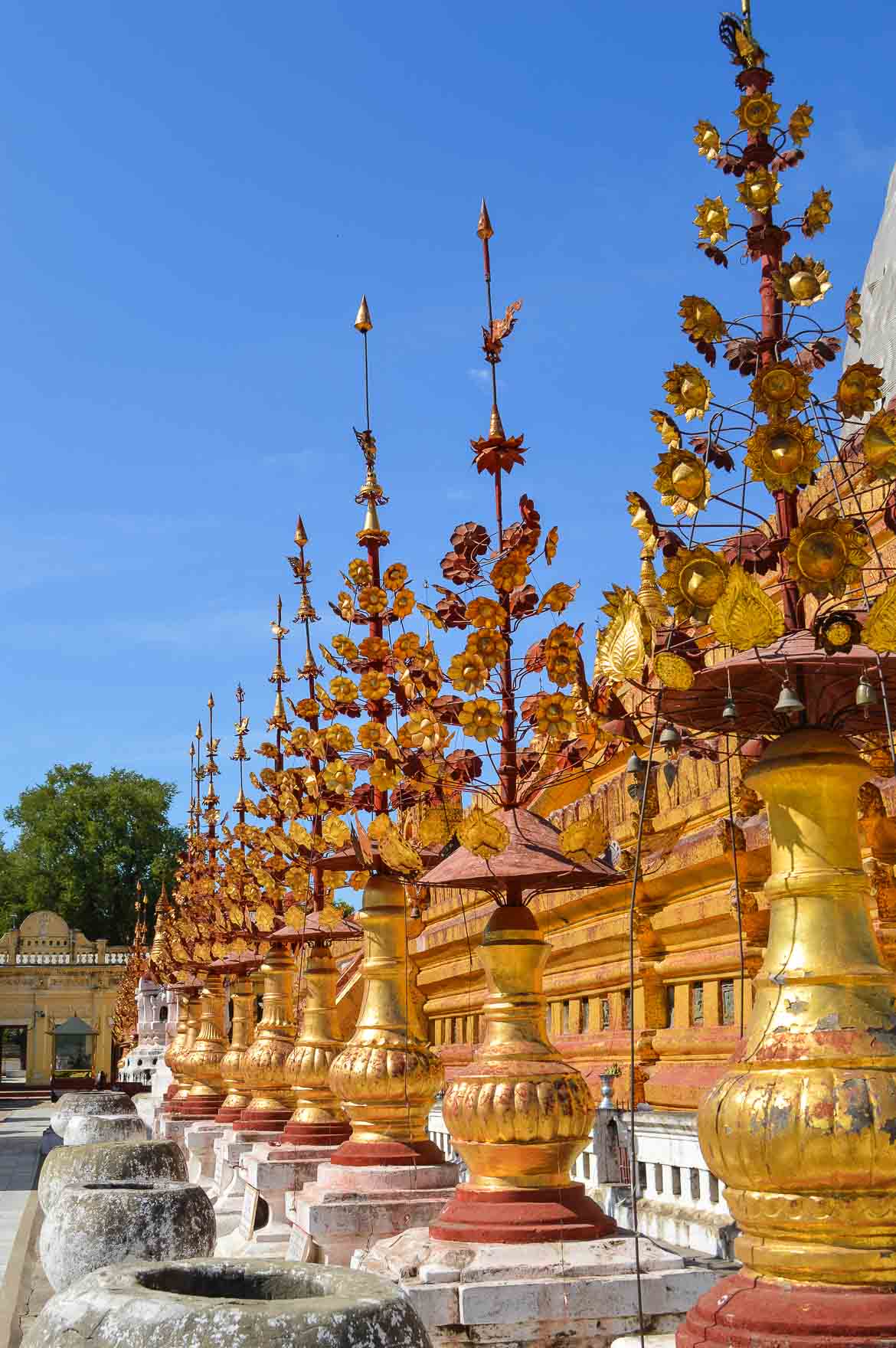
Thatbyinnyu Temple stands 61 meters high, making it the tallest, and therefore one of the easiest to identify, monuments in Bagan. Great views of the site can be had from Shwegugyi Temple, which was where the photo below was taken.
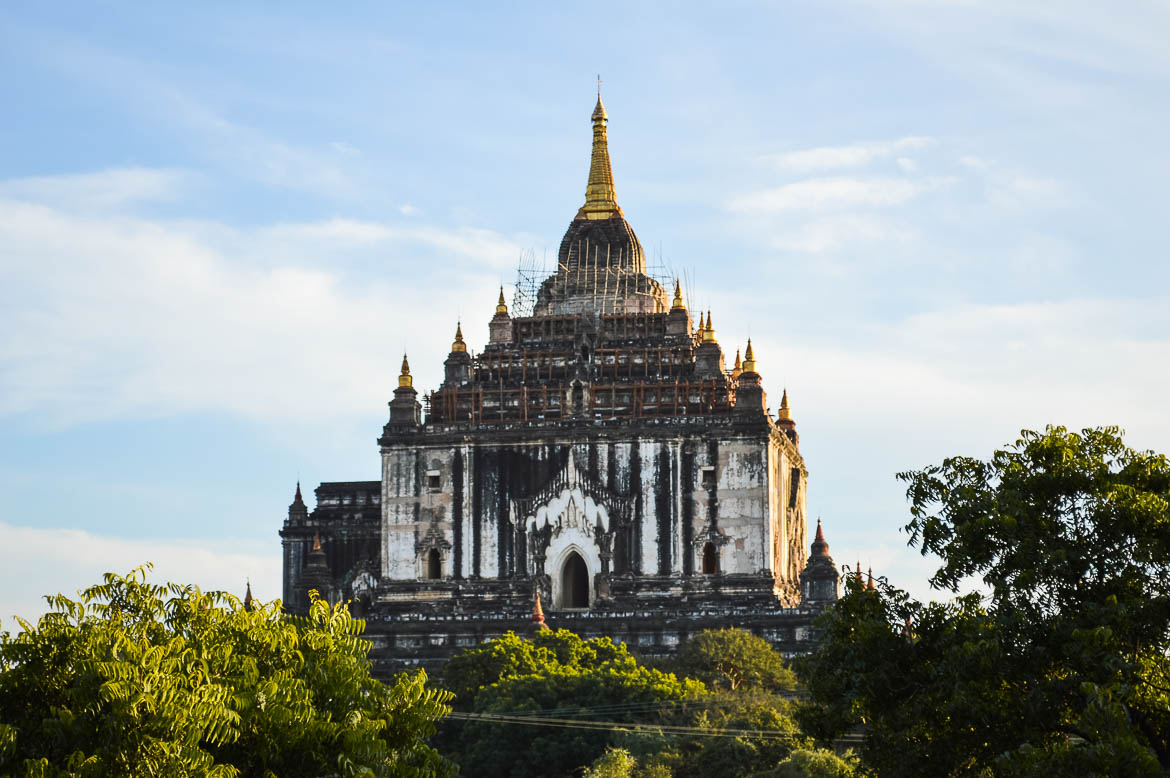
Both Thatbyinnyu and Shwegugyi are close to the famous Ananda Temple. No doubt one of the busiest temples in all of Bagan, its fusion of Mon and Indian architectural styles houses large golden Buddha’s in each of the four cardinal directions. Ananda itself was nearly entirely reconstructed in 1975 after severe earthquake damage. Hundreds of sizeable quakes have hit the area throughout history. Objectively, Ananda therefore offers very little of the truly original monument. Some restoration attempts have gone as far as to use what can only be described as tacky 1970’s kitchen tiles for a portion of the hallways around the site. Its exterior is also bathed in fresh white paint on a regular basis. For this reason, along with the hoards of bus groups that crowd the site due to its accessibility, I see it as rather skippable if you’re a traveller who is tight on time.
Shwesandaw Pagoda is well known for impressive views from its seven story terraces. For some, the stunning sight of nearby Dhammayangyi Temple at sunrise is worth contending with hoards of other people.
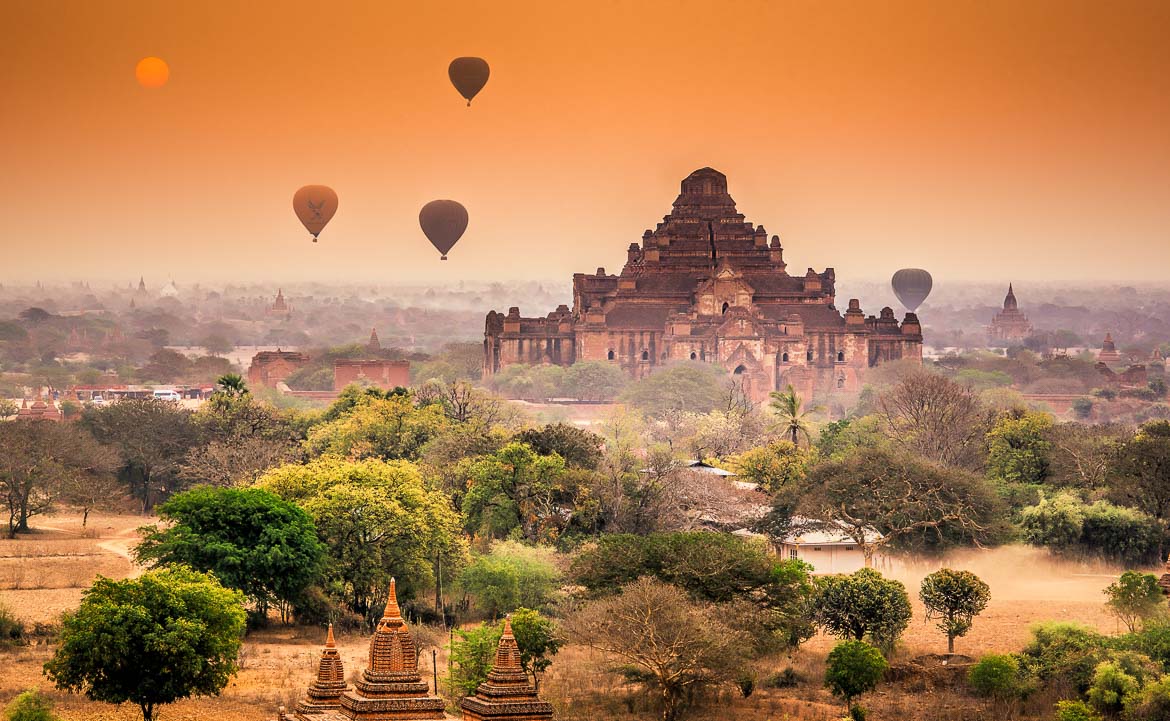
Though climbing atop Dhammayangyi Temple to take in the view is not permitted, the allegedly haunted site certainly merits a visit. It was built by King Narathu in the late 12the century, an oppressive ruler who killed his own father, older brother and wife. He was also known to sever the limbs of labourers who did not meet his exceptional brickwork standards. The ‘blood stone’ used for such purposes sits on display within the temple as a stark reminder of all the lives lost. It’s said that over 600,000 bricks were originally used to construct the temple, which is the largest in Bagan, and not a single hair could fit through them. Construction was ultimately abandoned shortly after Narathu himself was assassinated in 1171. Karma.
The ‘Lesser Known List’
Each traveller will define their perfect view differently. For me, part of the notion entails some level of being off the beaten path amid seemingly undiscovered areas and of course the sheer beauty of the scenery around you. Though Bagan’s exceptional growth in tourism means you’re unlikely to be truly “alone” on the larger sites, the number of other travellers you see at the lesser known temples shouldn’t be more than a handful at most. With that in mind, this list of less popular, but equally, if not more impressive sites, is my gift to you.
Shwegugyi Temple meaning ‘the Great Golden Cave’ stands as one of the most intact temples of Bagan’s ‘middle era’. It represents the architectural shift towards more open, lighter construction of temples in the 12th century. It also represents a rare opportunity to take in jaw dropping views away from the crowds of nearby Shwesandaw Pagoda. Climbing the multiple stories of the temple is relatively easy, though some portions of the rooftop require creative maneuvering around legitimate boulder sized clusters of brick that fell in the most recent earthquake.
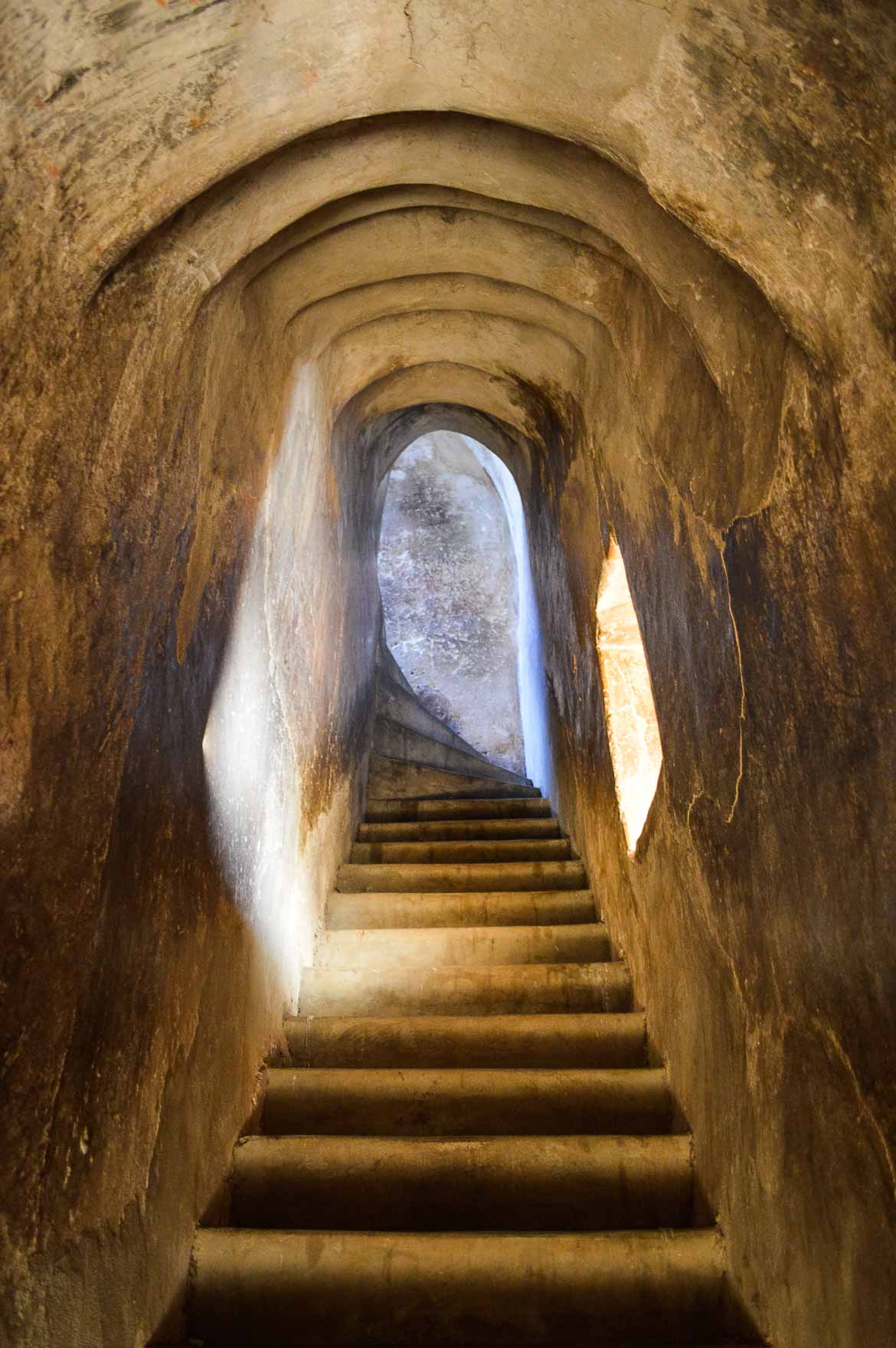
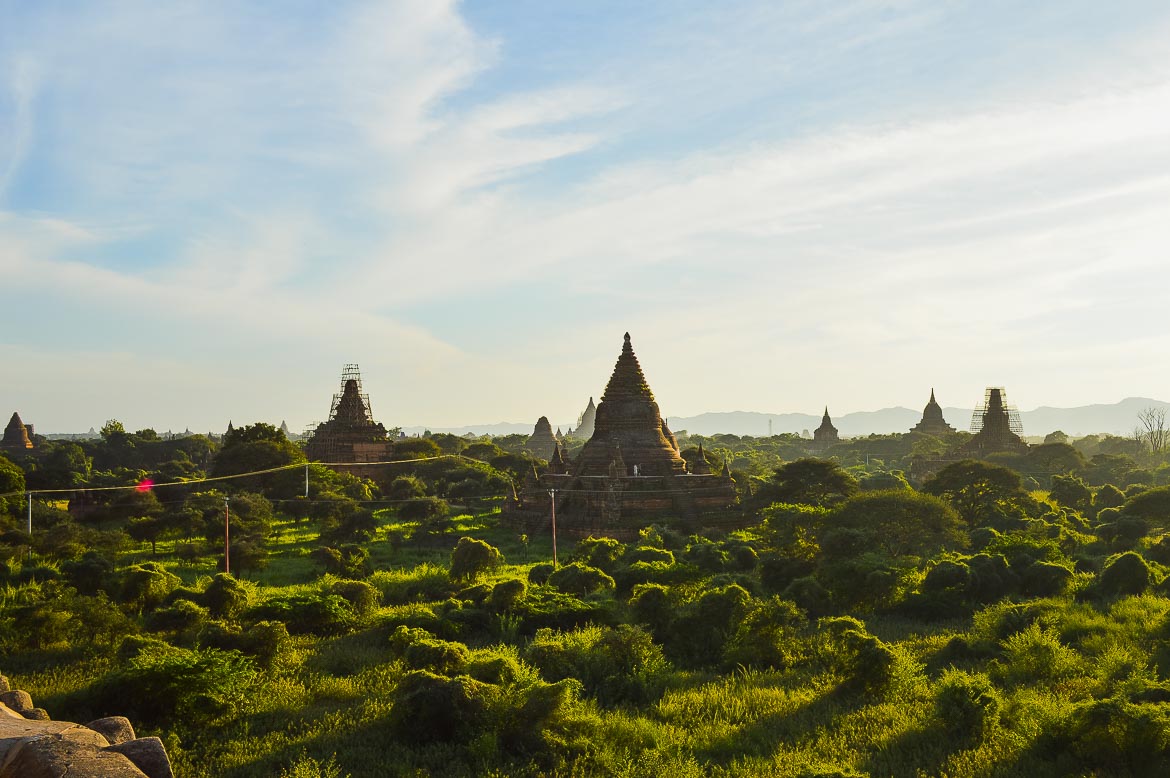
Low ka Oushang Pagoda is quickly becoming known as the best ‘off the beaten path’ sunrise spot in Bagan. Located close to the cross roads of Anawrahta Road to the north and Bagan Chauk Road to the east, it offers two stories with the ability to climb a little higher if you dare. While crowds are small, this may change in coming years. Consider this another “get there while you can” message.
North Guni Temple sits in the shadows of the aforementioned Dhammayangyi Temple. For those willing to overcome the incredibly steep climb, it also offers exceptional sunrise and sunset vistas. Unfortunately as of January 2017, much of North Guni is closed for restoration following the earthquake. South Guni remains accessible, and while shorter and slightly further from some of the larger temples, it still provides an impressive experience.
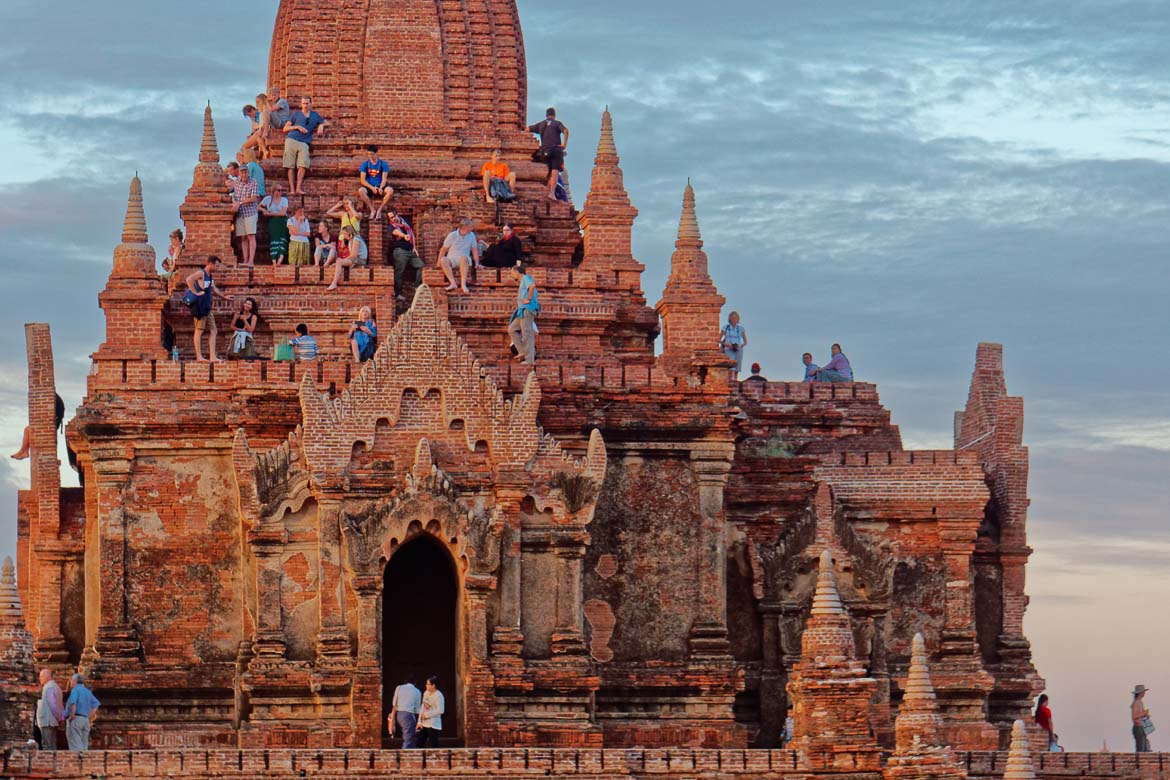
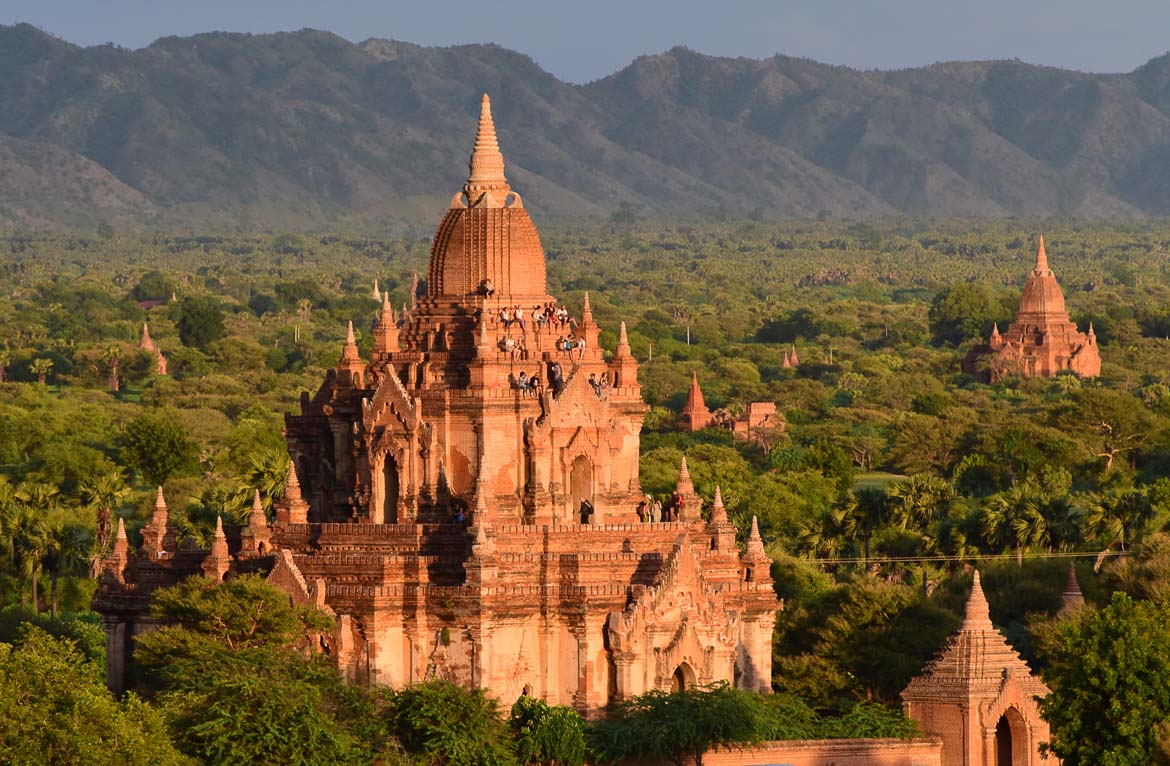
Ultimately, what have nearly four days in Bagan and the pursuit of the perfect view taught me? It’s as much about the feeling you have while there as it is about the photo you may capture. The feeling of calm sitting under a tree gazing out over hundreds of cattle meandering through fields, or the satisfaction of happening upon a procession of monks without a picturesque temple in sight. For those with a healthy travel budget, perhaps one of the most incredible ways to take in the view is via hot air balloon.The truth is, you never know where your perfect view awaits.
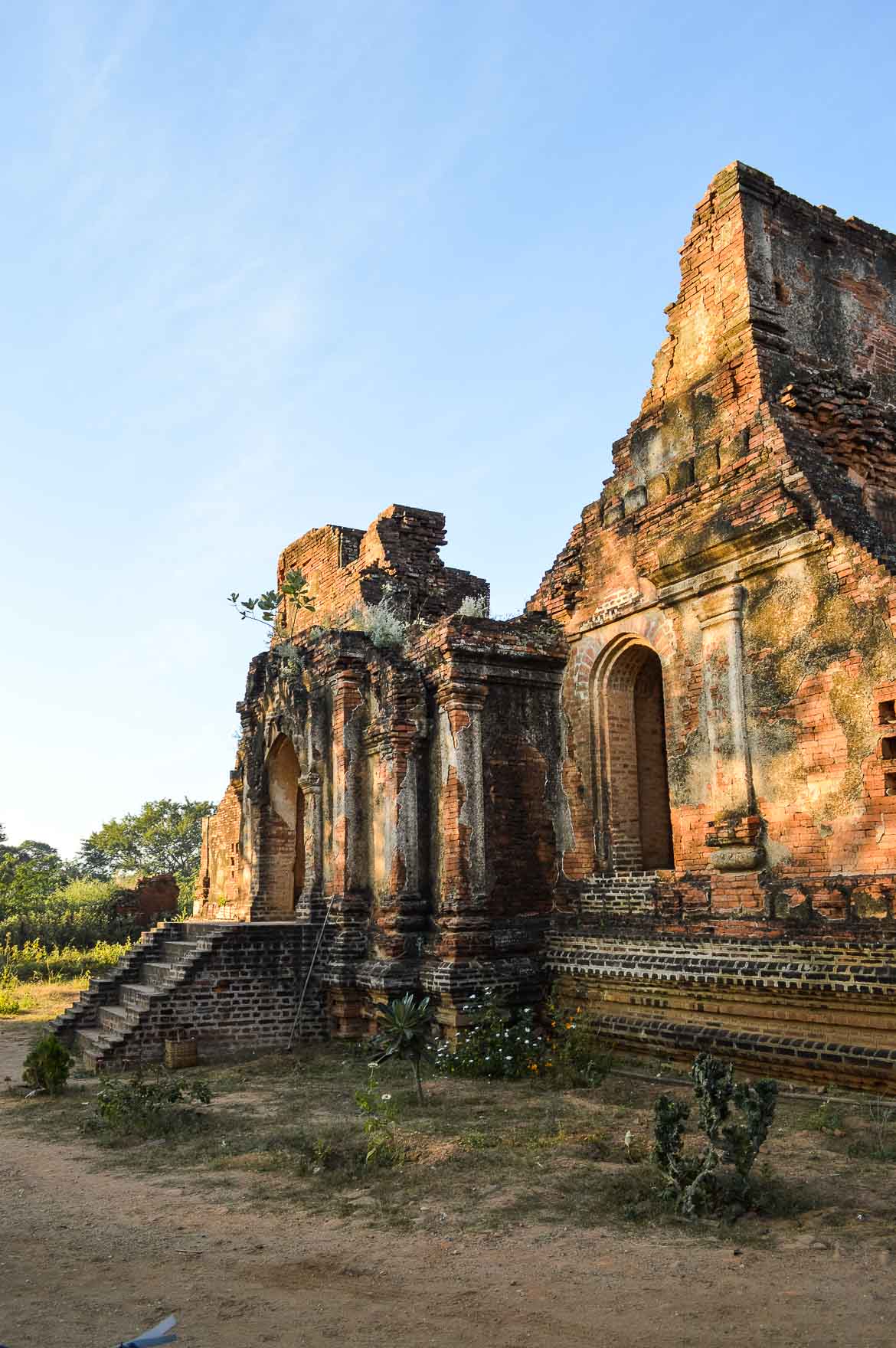
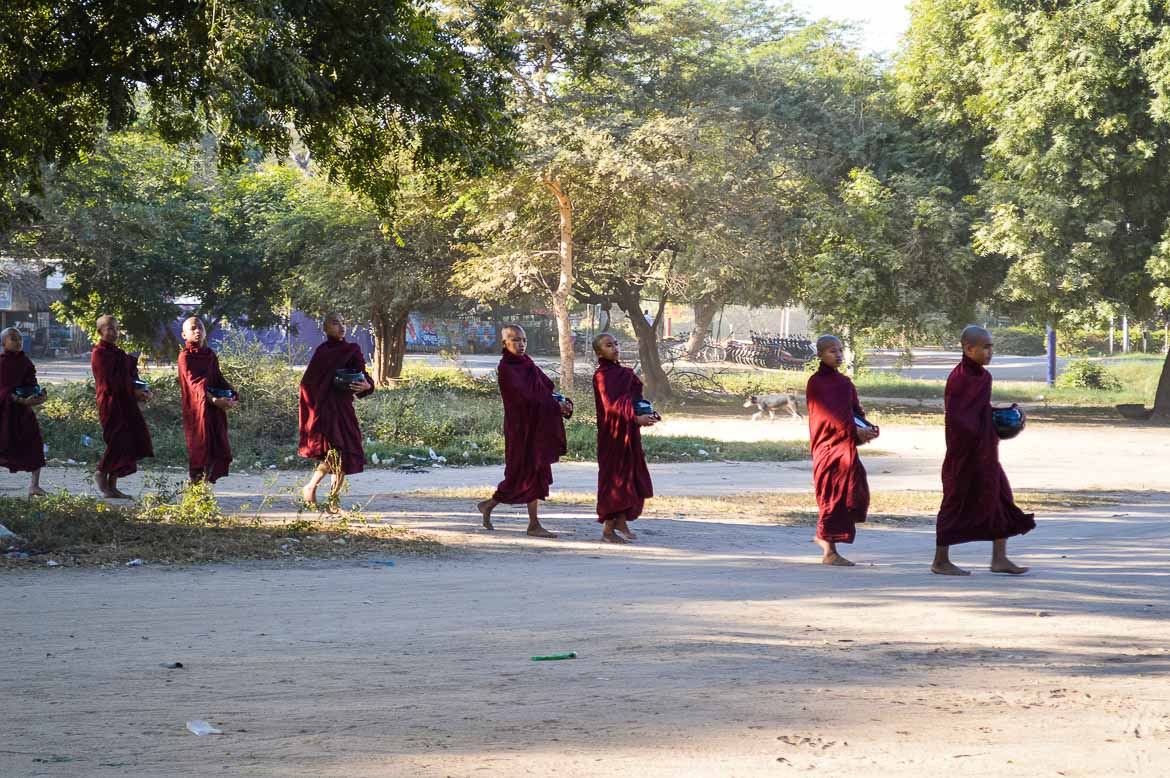
Last But Not Least – Avoiding The Scams
Understand, the people of Myanmar are by in large incredibly kind. However, with the number of visitors to Bagan more than doubling in the past four years to over 250,000 annually, there is a growing number of individuals who look to take advantage of travellers. When in doubt, trust your gut.
While removing shoes is necessary at each monument, leaving them in the cubbies, or paying a local to watch your belongings is not. The best route is to slip your shoes into your own bag and bring them with you. This allows you to more conveniently leave any entrance and exit you wish, and avoids negotiating the tip amount to get your shoes back.
When it comes to handicrafts sold outside of temple gates, assume it’s fake. This applies to everything. Perhaps the sole exception to this are drawings or paintings that you literally witness being made in front of you.
When it comes to friendly guides, assume there is always a cost. If a local shows you around a site, particularly any lesser known staircases to rooftops, there is expectation of a tip. The amount is not fixed and can be quite small, so engaging with locals this way is really up to you.
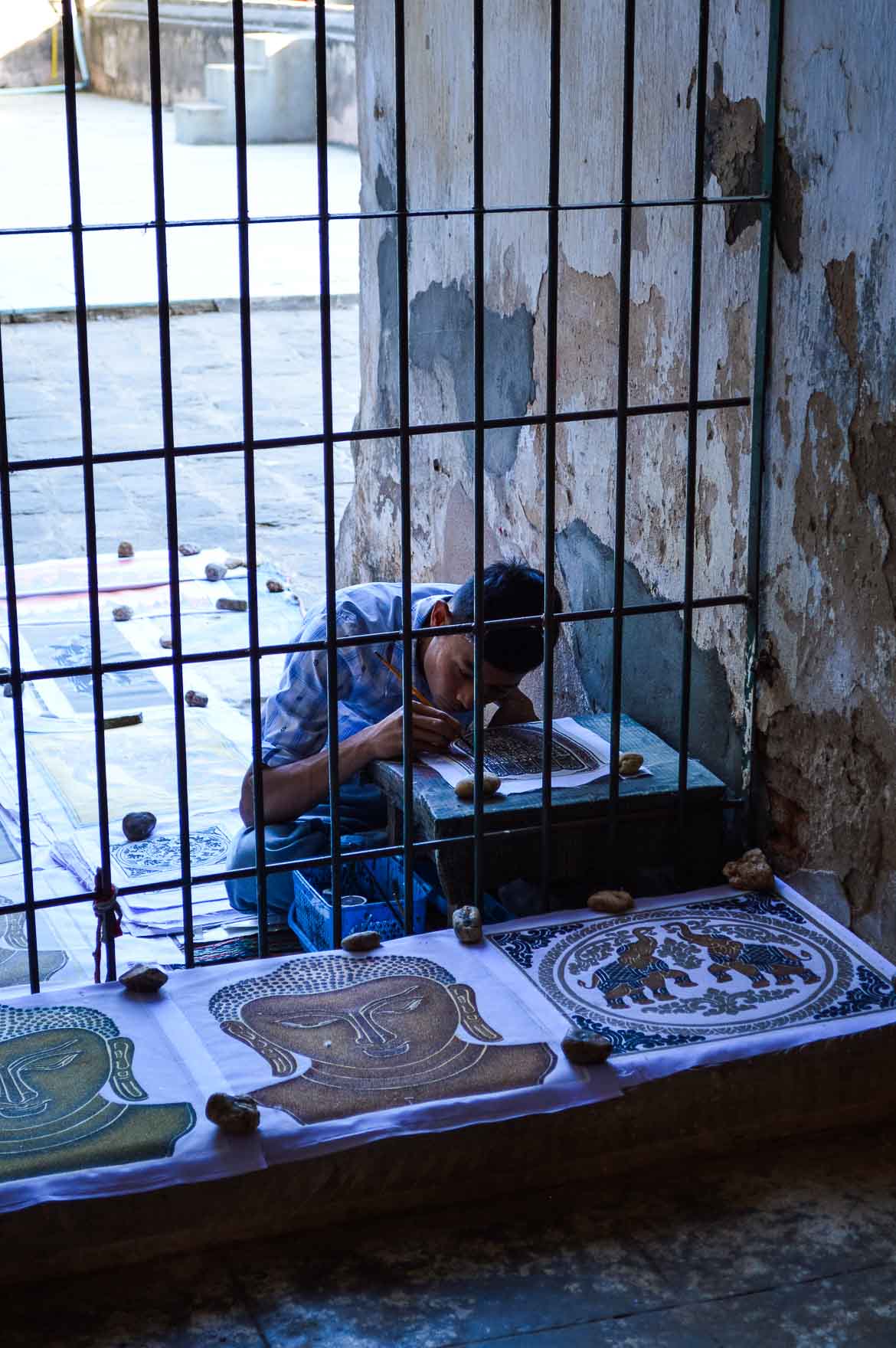
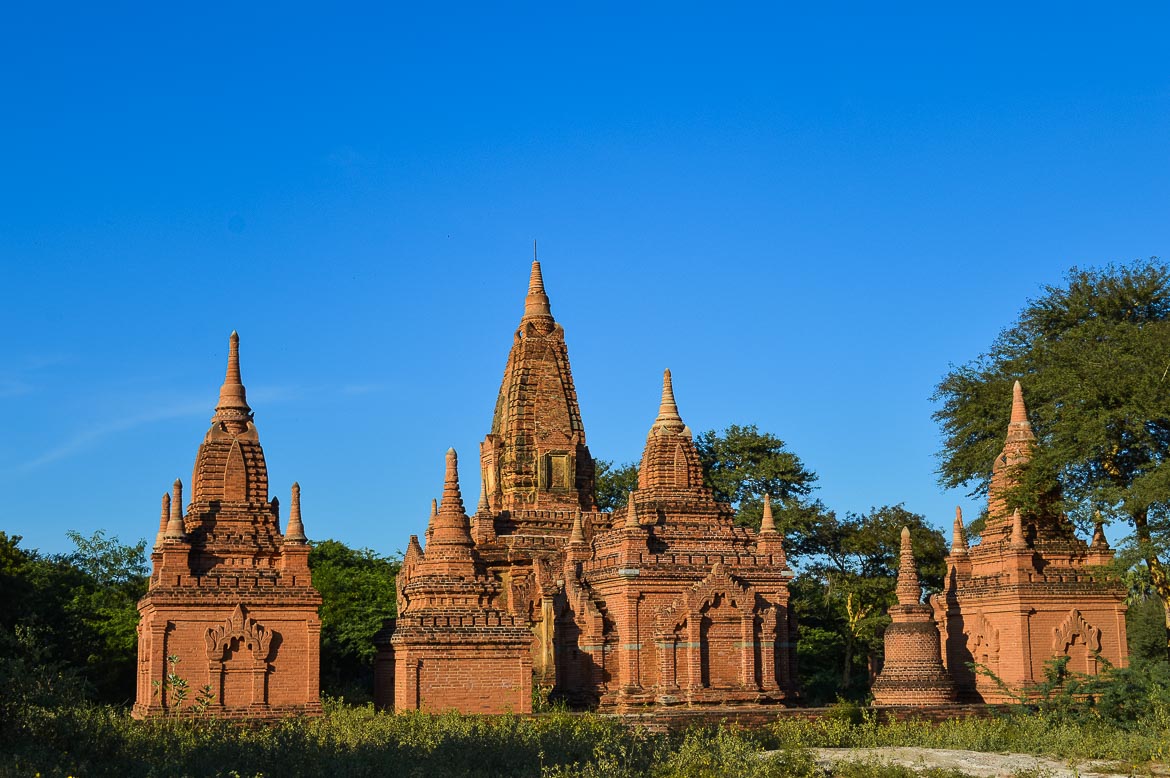
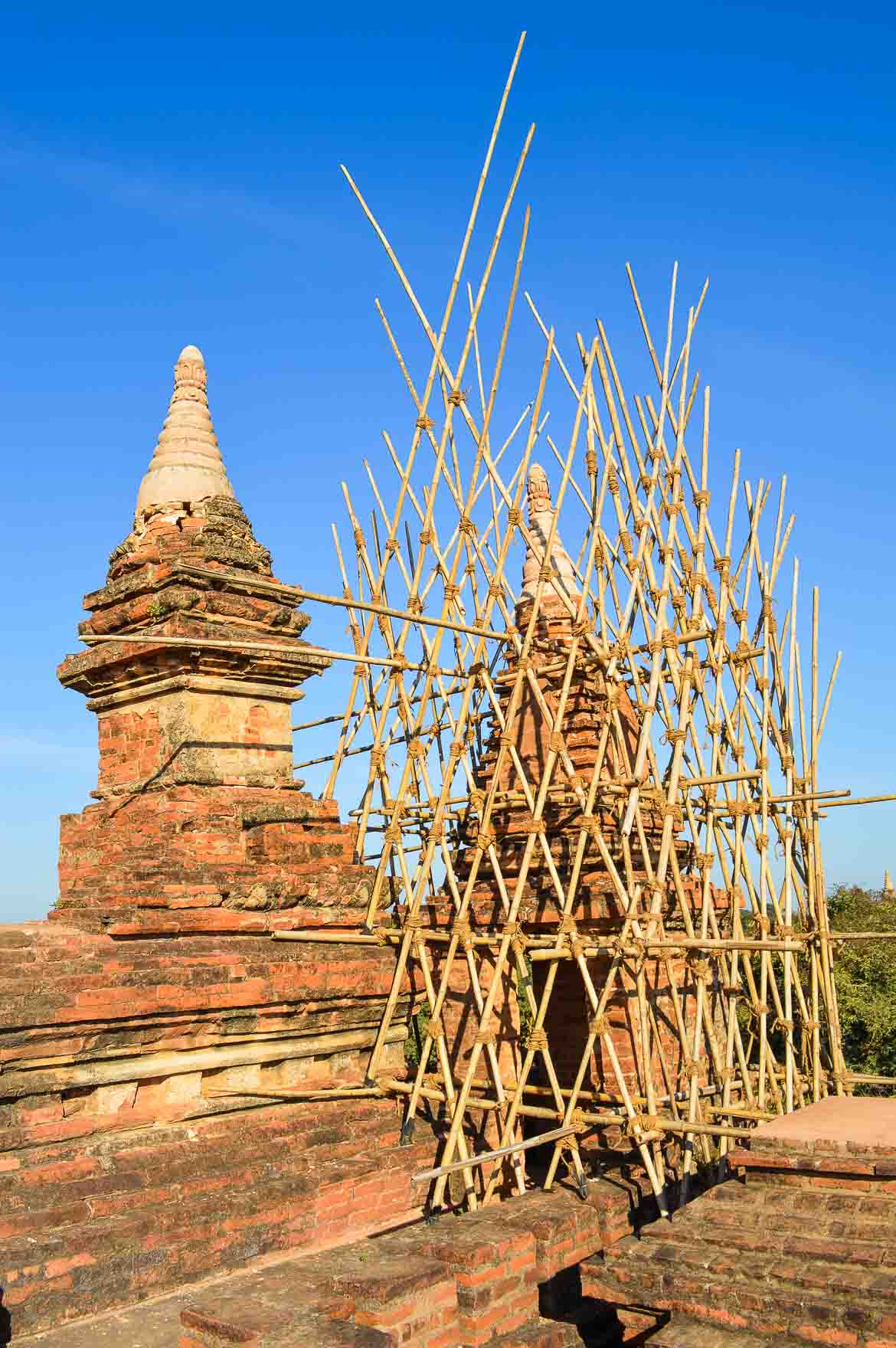
Photos by Madeline Burch and courtesy of Flickr: Ahmad Syukaery, Tiberio Frascari, and Recliner.
Make your next trip the best one.
Departful is a full service travel agency creating truly exceptional travel experiences that are 100% personalized to you. Wherever you’re going, whatever your interests, we help you plan the perfect trip.
Madeline Burch
Madeline was born and raised in Toronto Canada, educated in marketing, and has worked in brand management and the alcohol industry for nearly a decade. In search of great drinks, stories and photos, she has travelled to South East Asia multiple times including a recent eight month stint based in Vietnam. From luxe travel to volunteer missions, she’s interested in it all.


